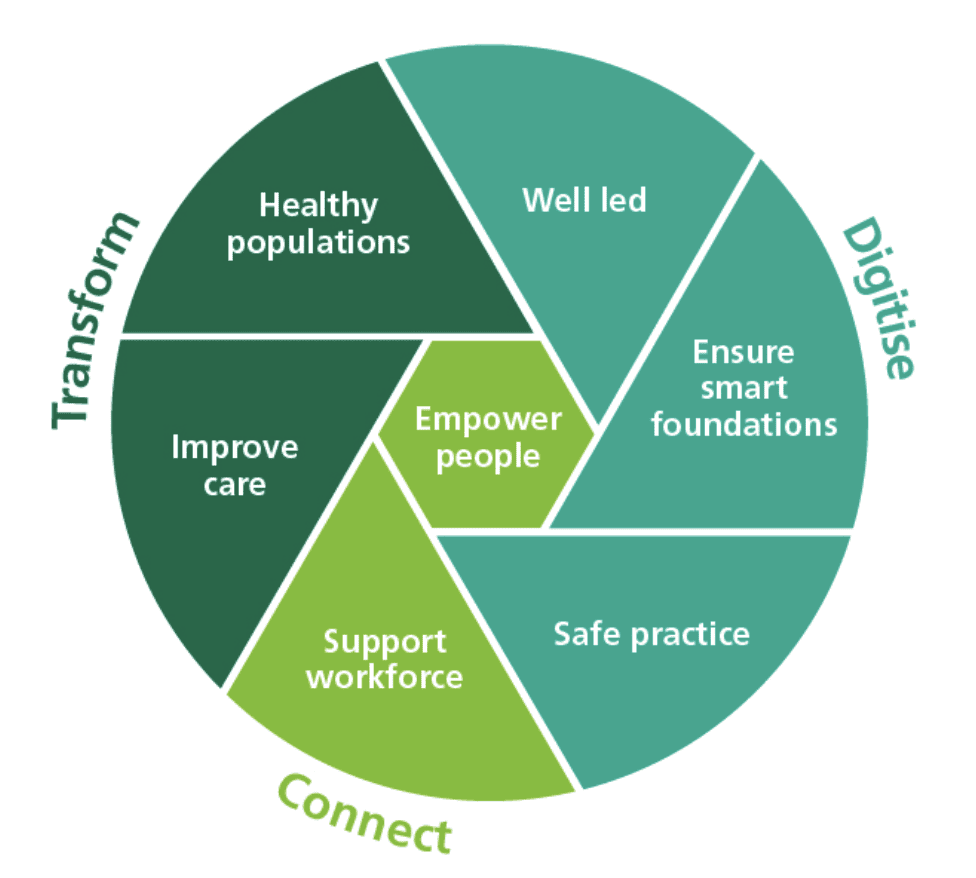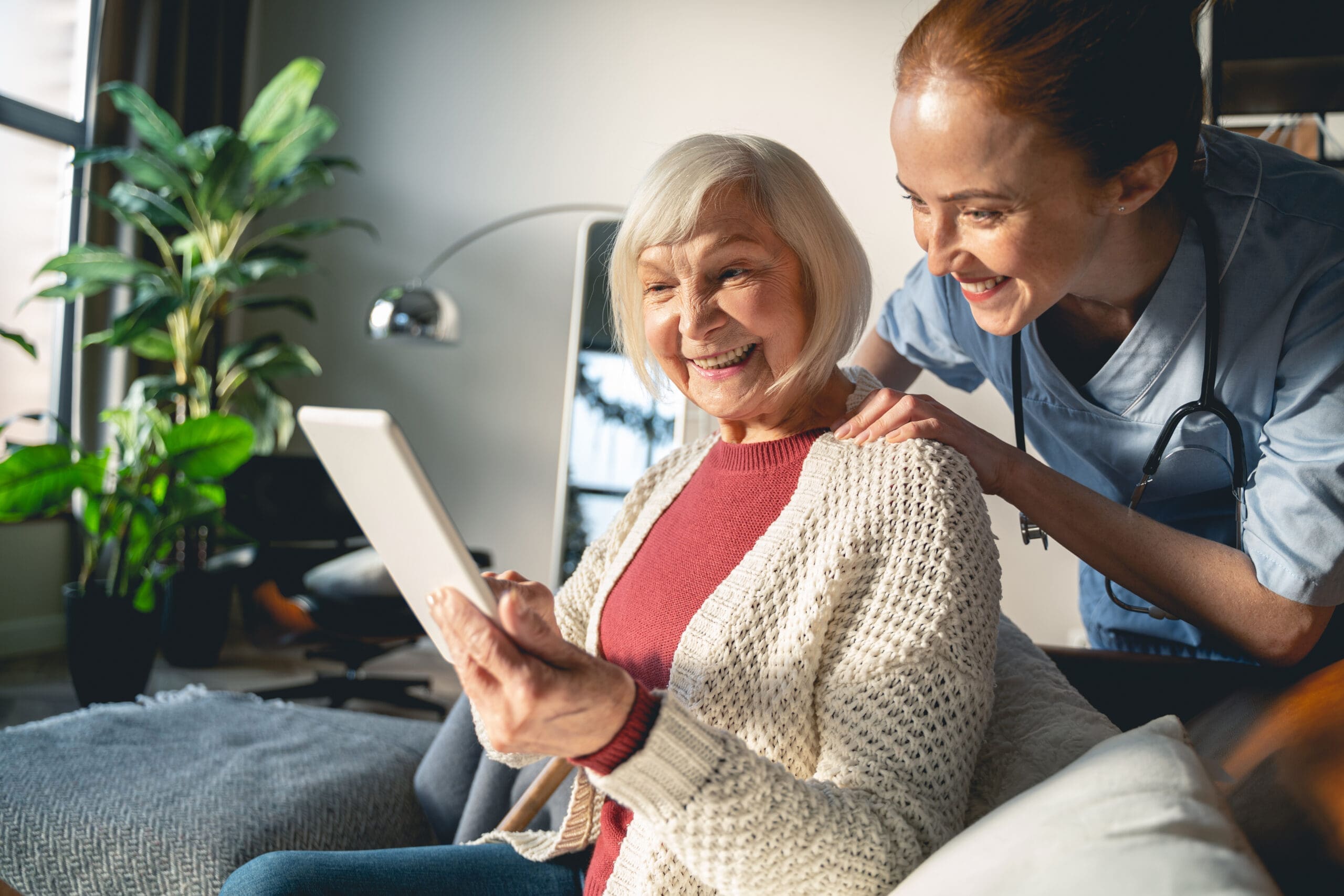The government has released a ‘What Good Looks Like’ (WGLL) guide for Local Authorities and care providers in England. This guide builds on the ‘People at the Heart of Care’ white paper from 2021. The guidance is aimed at individuals who have responsibility for digital transformation. In both local authorities and care provider organisations. It provides an aspirational framework to help them shape the future of digital solutions in social care.
The paper is focused on England. But it offers good practice and practical advice relevant to care providers across the UK and Ireland. We’ve summarised its key points in a series of blogs. To help Nourish users and others in social care learn from the White Paper.
Breaking Down the Section
The new WGLL framework comprises 7 success measures divided into three categories. The three sections are Digitise, Connect and Transform.

For our third and final blog in this series we are examining the category ‘Transform’.
Improve Care
“Effective use of digital technology, data and processes can support the delivery of outstanding quality and personalised care and support at the right place and at the right time.”
Ultimately, digitisation is about improving care. The pursuit of this goal lies at the heart of every improvement that digitisation can bring. By saving time and money through digitisation, you can reinvest it in the care your team provides. Improving outcomes for the people who draw upon your service.
Digital care management platforms, such as Nourish Care, can help you to improve your application of the data you are already gathering every day. By examining this data and applying the information it gives you to the continual development of your care. Empowering you to be dynamic, responsive and collaborative in your approach to care provision.
This can be through studying trends that were previously more difficult to recognise. Building case studies over time on specific clients to better personalise their care. Or sharing experiences from different carers with the whole team in easily accessible documents sent directly to each person. There are a wide range of ways to use digital tools to improve the standards of your care.
This benefit is not dependent on spending a lot of money on new technology or hardware. As habits, successes, and even mistakes are all held in the same system, it becomes much easier to track them, learn from them, and adapt your approach.
Of course, it is vital to know where you are starting from. Make sure you record your current practice before making any changes, otherwise you won’t have a record of the improvements you are making!
If you would like to learn more about how Nourish can help you improve your services you can read our case studies on how Quality Home Care made significant savings or how Priory Group improved their focus on outcomes for over 2,300 residents.
Healthy Populations
“Having good data to understand and plan for the needs of the population (whether at a community level or individual level) means that we can reduce inequalities and improve outcomes for all people.”
You can change the way you provide care by using data effectively. By monitoring your care, you can gain insights you wouldn’t otherwise get. To ensure effectiveness, it must be balanced with a human approach.
Data security is vital for ensuring the privacy of your team and the people who utilise your care. You must also keep in mind the ethics of data collection. The danger is that when people are reduced to numbers and data points, you start to see them that way.
Co-production offers an effective bulwark against these bad habits. By involving people in the process of shaping their care, and keeping them in control of their own data you empower both the people themselves, and the service they are a part of.
The same rings true for finding the right digital partner. When you work with a supplier who understands your goals, and works with you and your community, you can ensure that together you use data securely and ethically. We have previously discussed the importance of Safe Practise in the What Good Looks Like guide. When considering the health of people in social care both the security of the data and how you apply the information you have gathered are crucial to your success.
We have worked closely with both third party developers and County Councils to develop innovative applications of data in care through our Partnership Programme. The Nourish Partnership Programme (NPP) unites key best-in-class innovators like Camascope for eMAR, Radar for incident management and PainChek for pain management whilst keeping a finger on the pulse for emerging technologies that will have a big impact on the social care sector.
If you’d like to learn more about the power of data and how we work with providers to help them harness the power at their fingertips you can read our case studies. See how Abney & Baker utilised our Application Programming Interface to improve their service. You can also read about how going digital helped transform Hampshire County Council 16 adult social care services.








